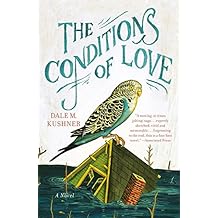Then, a month ago, in a local paper, I read an article about "mini ponds". The writer suggested sinking a washing up bowl into your soil, but look! I already had a container! Got some help getting it to the desired spot, washed it out, and found some large pebbles and a couple of bricks and filled it with rainwater. In washing it out, I found it had it's own built in fossil - a fan shaped piece of coral, I think ... so as we are a mile inland from the Jurassic Coast, surely it's local stone?
- The jumble of bricks and pebbles create a little cave in case a toad arrives (hoping!)
- the stone in the middle of the water is not completely submerged so that bees can land (although the article did suggest wine corks, but all my wine has metal screw tops at the mo').
- The left hand side of the container is shallow enough so that should a hedgehog get in, he can get out again without drowning.
Next - you need to give shelter and protection from predators (a couple of cats use this garden as the end of their perambulations and also we do get sparrowhawks). On the left of the pic is the original border edge, so I dug out the turf between the old edging and the mini pond and planted things that will give some good cover and provided a little toad shelter - terracotta, so should keep coolish.
But I wanted to plant around the container, not just on that one side, and had a light bulb moment then! I had some slabs from a path being laid and some had been broken in the attempt. What if I put those broken pieces next to the container, but with a gap for some planting? You can see from the pics that there is a small amount of soil left for that purpose. It looked OK, but not really very professional. So I added a whole slab each side and removed more turf to have the slabs sunk into the grass (making for easy mowing).
You can see my footprints, I was out there early for the pictures, and the dark marks are dew. So now I have some little areas at each end of the container to plant, and when established should look more natural and give Mr Toad, should he ever arrive, even more cover to mooch around in! (of course, if frogs come, they can use the covers also - or maybe I will even get newts!!)
Here's a miniature Iris in full bloom and behind it, although unseen at the moment, is a large lump of the common yellow flag Iris, often seen near water. My garden is at the top of a hill. It gets full sun from dawn onwards until around 4.00pm, with the exception of an area of shadow from a holly tree which gives the mini pond area some shadow from around 1.00pm onwards. So I steer clear from any plant that says "likes cool, damp conditions". However, when filling the mini-pond (which I guess in high summer will be daily), the overflow slides off in the area where the Iris are planted. Win-win!
And here, some bulbs in pots are ready to plant out elsewhere, but giving colour and interest now.
And there it is, ready to go. Well, I say ready to go... in fact the blackbirds that nest in my hedges found it within an hour, and have daily baths! You can see at the top left of the pic that I am tidying up the border and the edging, but didn't get as far as the mini-pond because I was far too excited!! Look carefully at the back of that border and you can see huge clumps of primroses - and I never planted one! It's been a good year everywhere here in the South West of England for primroses, and I've been particularly lucky as they seem to love the conditions in my garden so I just left them seed. We have a grass area outside out hedge on the road side which is not owned by us. It's maintained by the local authority. I think some of those primroses are headed for that area shortly.
I'll come back in a couple of months to show the area with completed planting and perhaps a wildlife report too..... "Come on Mr Toad!"










